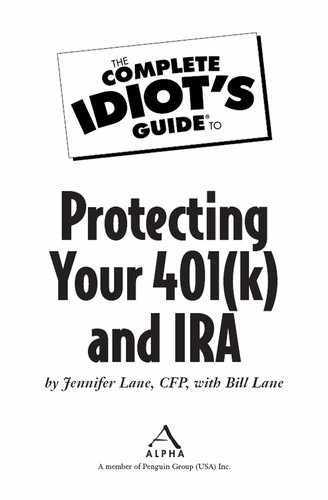Active vs. Passive Investing: Choosing Your Best Style
Pooled investments like mutual funds and exchange-traded funds (ETFs) are the easiest investments to maintain in retirement accounts because they’re professionally managed and diversified. You’re not left picking the individual stocks or bonds in the account; the professional managers do that for you. Investment funds follow one of two basic investing styles: active or passive. When you select investments to fulfill your target asset allocation, you’ll need to decide whether you want actively managed or passively managed funds or a little bit of both in your accounts.
Exchange-traded funds (ETFs) are pooled investment accounts like mutual funds in that they hold a basket of many individual investments. They are traded directly on the stock exchanges by investors buying and selling their shares like stocks.
Active management means the fund manager is choosing individual investments that her analysis shows should perform better than other similar investments. Active management costs a little more: the manager needs to be paid, trading costs occur when she buys and sells investments, and taxes are due on the investment sales.
Passive management follows the logic that it’s unlikely that a fund manager will consistently beat the market over the long term, especially when factoring in the extra costs. Therefore, a passively managed investment seeks to simply match the market’s performance. Passive investments are also called index investments because instead of actively picking investments, the management team simply buys investment instruments that comprise or replicate a particular market’s index that they’re meant to be tracking. Both index mutual funds and exchange-traded funds (also called index shares) follow this passive investment style.
You can build a good retirement portfolio using either actively managed mutual funds or passively managed index funds or ETFs. This list shows some of the funds that were recently in three popular target-date funds, as an example:
• Vanguard Target Retirement 2025 (all passively managed)
Vanguard Total Stock Market Index Fund
Vanguard Total Bond Market Index
Vanguard European Stock Index
Vanguard Pacific Stock Index Fund
Vanguard Total Stock Market ETF
• T. Rowe Price Retirement 2025 (mixed passive and active funds)
T. Rowe Price Value
T. Rowe Price Equity Index 500
T. Rowe Price New Income
T. Rowe Price International Stock
T. Rowe Price High-Yield
• Fidelity Freedom 2025 (mixed passive and active funds)
Fidelity Disciplined Equity
Fidelity 100 Index
Fidelity Total Bond
Fidelity Mid-Cap Stock
Fidelity Diversified International

Rainy Days
One negative of target-date funds is that they usually pull their investments from one fund family. Most families have specialties—Fidelity is known for their skill with stock funds, for example—so the target-date fund might contain some strong and some weaker mutual funds. If you were building your own portfolio, you could pick the best of the best and not be limited to one fund family.
If you check the makeup of these funds over time, you may find that the target-date managers have changed some of their choices. That’s part of the beauty of a target-date fund—a manager keeps an eye on the investment choices in the account as well as the asset allocation. Notice that, except for passive management pioneer Vanguard, both T. Rowe Price and Fidelity each use both active and passive funds in their accounts. Index maven Vanguard goes the extra step of including an ETF on its list.
..................Content has been hidden....................
You can't read the all page of ebook, please click here login for view all page.
